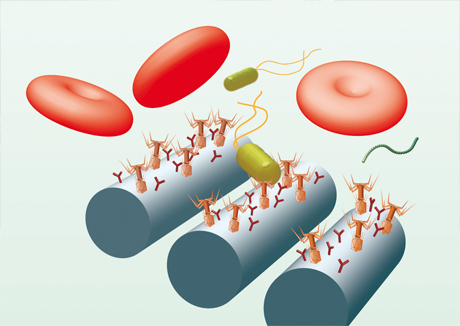In SmartDiagnos we aim to improve current commercially available PCR systems for infection diagnostics, by integrating the necessary systems into one device. Additionally, by using recently developed technological advances, the project aims to reach new levels concerning sensitivity and specificity. This shall allow for fast and easy pathogen identification.
|
Methods
|
Existing technology:
Pathogen detection by BC (gold standard)
|
New technology:
SMART-DIAGNOS
POC / LAB
|
|
Time to results, (hrs)
|
48-90
|
1-3 / 3-5
|
|
Diagnostic sensitivity
|
30-50%
|
95%
|
|
Specificity
|
93-97%
|
99%
|
|
No. of pathogens
|
Optional
|
20 / 70+
|
|
No. of AM genes
|
Optional
|
20 / 100+
|
Interviews with clinicians
There are some examples in history where geniuses invented great tools, which however no one neither used nor needed. To avoid a similar fate for our project we have conducted 68 interviews and an e-mail survey with staff of intensive care units, surgeons, neonatologists, haematooncologists, clinical microbiologists, biochemists, nurses, and technical staff in Sweden, Czech Republic, Austria, France, Switzerland, and Portugal, to discuss our concept of integrated pathogen detection and determine the real clinical need.


We also wanted to find out how such a system would be integrated into their workflow, which setup they would prefer and which benefits they would expect from using it. The results were combined with recent literature on definition, treatment guidelines and epidemiology to define the requirements for both the point-of-care (POC) and the lab systems, including but not limited to a list of pathogens, the maximum handling time and steps for the user and time to result.
Not surprisingly the interviewees agreed that every new system will have to compete with blood culture – the current reference method – regarding sensitivity and specificity.
The pathogens
The most frequent pathogens mentioned in the interviews in conformance with the literature were Staphylococcus spp., Enterococcus spp., Escherichia coli, Klebsiella spp., Pseudomonas spp. and Candida spp.

While the distribution of the causative pathogens does not vary significantly throughout Europe, the pattern for antibiotic resistant pathogens – which will be also addressed within this project – shows higher incidences in southern European countries when compared to Scandinavia. Additionally there were some special wishes which most likely will exceed the scope of this project such as using other matrices than blood for analyzation, or building a shock proof device for mobile use in ambulance car. But we are confident, that the basic platforms we are developing in this project can be extended and upgraded to also meet those criteria, if there is a need.
With the system requirements in place we have a sound basis for the further important work in SmartDiagnos.